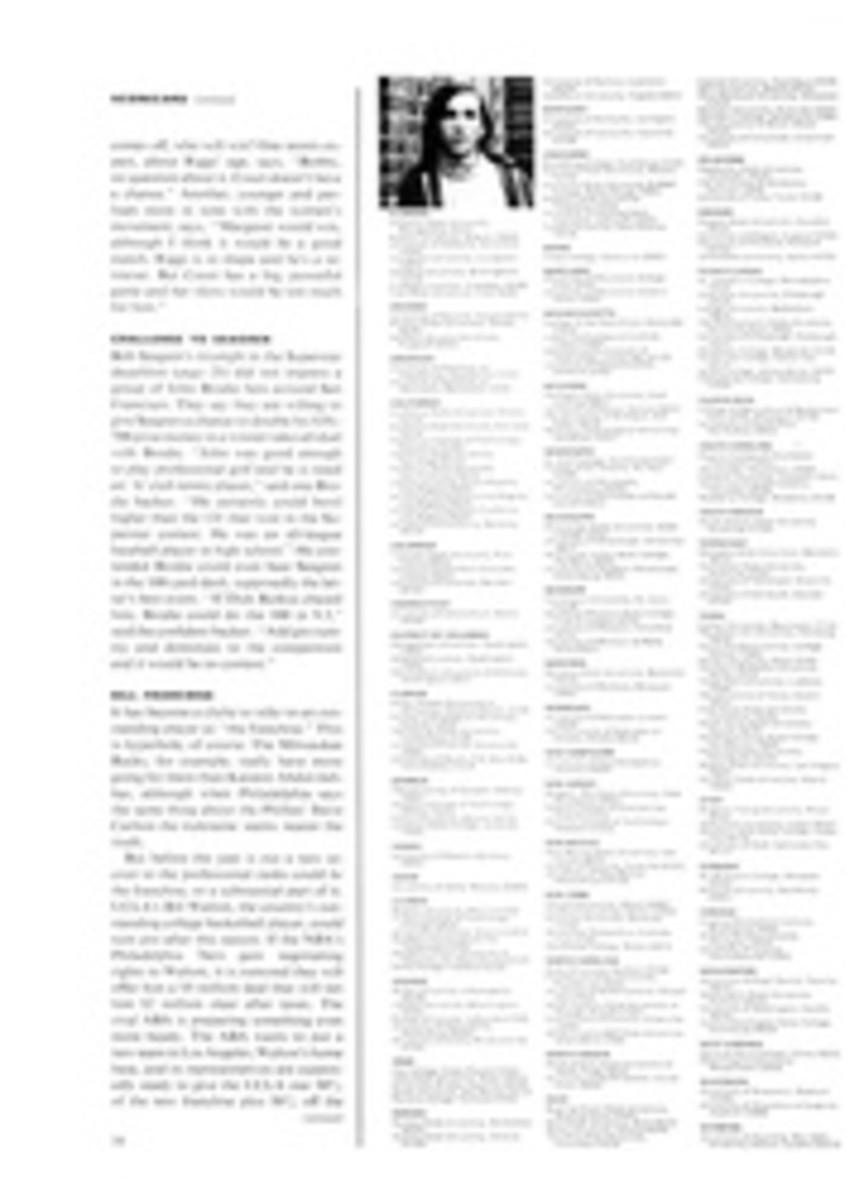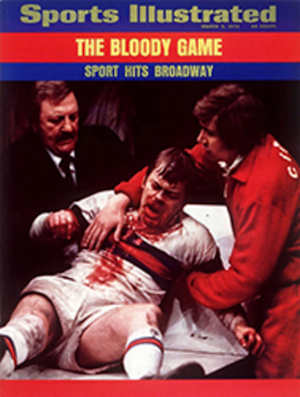
GOING RACING ALONG A DREAM ROAD
Everybody benefits from this gem of a road-racing course located in paradise. It provides the ultimate test of cars, the optimum test of drivers and the maximum thrills for spectators. They get to see it all. Arriving at this perfect goal calls for a lot of money, millions, and a new level of design. I don't know where the funds will be round, but I do have the plan. One must expand on those old familiar devices like esses and chicanes or closing radius and hairpin turns and adopt a radical new racing theory. Call it brilliant compromise.
First of all, this dream course must possess certain physical characteristics. Most every country where cars are raced has the terrain. The circuit must be about four miles long to provide plenty of room for a sufficient variety of straightaways and turns. That much is basic. Two of the turns should be very fast, to be handled from roughly 150 to 170 mph in fourth or fifth gear. Two of the turns should be tight, slow, first-gear affairs. And then the course must have a couple of change-of-direction corners—real tank-slapper ess turns. Well-planned straights also are most important: any driver who has put himself and his car far out on the cutting edge in order to get through a difficult corner in the fastest possible time should not then have to throw it all away by getting hung up behind a slower car with no room to pass. Thus, each fast corner on the perfect course should be followed by a long straightaway. It starts to take shape.
Further, our magic racecourse should have hills, not just to give the place character and to provide more challenge to car and driver but to give spectators a clutch of high, wide and panoramic viewing positions. All this plus an entire new approach to safety.
Safety is something I never just dream about. For years I have been actively campaigning for sharply increased efforts to achieve real safety in auto racing, and so I hardly need amplify on that subject—but the complete racecourse also is one that is as safe as can be.
Motor racing at its best is a well-integrated mixture of many technical and physical skills. It is difficult to separate the parts one from the other. But to my mind—speaking as a driver who is realistic rather than overwhelmed by modesty—the basic elements involved in this sport should rank in a certain order of importance. First, the engine. It must be quick and powerful, of course, but above all it must be reliable. A fantastic amount of money, brains and effort goes down the drain when an engine conks out in a race. Second, the tires. A set of tires that are durable, bite into the track, don't overheat and that react well under acceleration, high-speed braking and turning (or at least perform most of these chores reasonably well) will gain precious seconds that cannot possibly be found elsewhere. Third, the driver. The most brilliant driver in the world is never going to overcome the handicap of the wrong tires or an unreliable engine. Fourth, the chassis. A good driver can make a bad chassis perform creditably, but even better chassis design is a blessing.
Of course, any suggestion that my rating order is a bit jumbled would appeal to my race driver's ego and professional pride and would make me quite happy. Perhaps my astute team manager-owner, Ken Tyrrell, would stress more emphatically the importance of the driver. Tyrrell might say that he must have a good driver above all else because a good driver can liaise all the elements involved in a race, can help sort out what would create the right tire compound or a fine chassis and often keep a temperamental engine running where a less experienced or talented driver would not. Possibly. But whatever the ranking in importance of engine, tires, driver and chassis, they each play a vital role in a big race production and no one element should be overstressed in relation to the other. To make any race a real test, stern demands must be made on all factors, and to achieve this balance is where the fifth element, the dream racecourse, comes in. Only the perfect course can realistically provide the mechanical torture, force the compromise and, finally but vitally, be the stage and the amphitheater that puts this all forth in an entertaining package.
By torture I mean what should be done to the car and, hopefully, not the driver. What it means is that every component in the car should be stretched and tested to its limit.
Properly put together, the dream circuit applies these peak pressures to both car and driver. Nowadays, a race driver must be an absolute ensemble of skills to be successful. He must possess a cool temperament, be able to perform at peak ability the instant the starting flag drops. Fast on the straightaways? Of course. Able to reach the outer edge of his skill through the fast corners? Positively. Adroit in the slow, tight corners? Yes, even there. Able to maneuver swiftly in traffic? Certainly. A good course would demand it all. On our Grand Prix circuit these days there are drivers who do well only on very fast tracks—just on sheer guts. There are drivers who become competitive only on the so-called Mickey Mouse courses that feature an overabundance of slow, tight corners. There are drivers who can turn in super times on an empty track during trials but who are helpless when it comes to passing other cars in racing traffic.
Cars are just as complicated as drivers, the difference being that they are a shade less adaptable. A race car can be rigged, tuned and adjusted in advance to suit almost any particular course, especially if that course emphasizes one characteristic at the expense of another. A car set up to turn in maximum performance on short straights and tight turns, however, would probably prove an absolute washout on a circuit with long straights and fast corners. And that is another reason to create a course that will not permit any one-sided, overweighted adjustments. The car should be forced to handle every possible challenge, sacrificing a little here to gain an edge there. This is the brilliant compromise.
Finally, for the perfect circuit an imaginative attempt must be made to insure that the spectator wants for nothing within reason, either in the way of creature comforts or spots overlooking all the action. Fans should—at last!—be able to get close to the race in perfect safety so that the cars look awesomely real and not like windup toys. Spectators should be able to find high vantage points from which they can see several straights and corners. Finally, race followers should be provided with easy access to a number of varied points on the course so that they are not stuck for the duration into a single pocket where the action is nothing but a succession of colorful blurs and loud, barking vrooms.
Suppose that some very wise, very rich someone has now built the dream course (pick your own location). Imagine that the model pictured on these pages has suddenly blossomed into full size and glowing life and that we are seated in the cockpit of a Formula I racer as it hurtles at 180 mph down the 1,200-yard start-finish straightaway. The trip around the circuit might go something like this: Turn 1, a medium speed righthander. Touch the brakes 220 yards before the turn, gear down from fifth to second and quickly reduce the speed to under 100 mph to get through. Out of the turn and into the next straight, shift back up to third and stay in that gear through Turn 2, a medium speed left-right ess. We are now in the backstraight and passing a long, narrow lagoon on our right at about 150 mph. Turn 3, bending to the right, is taken very fast in fourth gear—and if we've done it well we can pass slower cars in the straight leading up to Turn 4. This is a toughy. It is a long, medium-fast downhill bend to the right that carries us onto a short straight and almost immediately into Turn 5, a right-hand hairpin that must be taken in first gear and is the lowest point on the course.
Start climbing back uphill again coming out of Turn 6, a second-gear bend to the left, then shift rapidly up through third to fourth as we repass the lagoon from the other side. Continue to rise through Turn 7, a slow, tight first-gear corner, and hit the highest point of the course midway down the long straight that leads to Turn 8. From here we can see the pit area, main grandstands and start-finish straight below us to the right and the swarms of spectators ranged on the grassy slopes below us to the left. Through Turn 8, a fast lefthander, we hit about 160 mph and then begin a long, gradual descent through Turn 9 in third gear. This heads us into another straight and into Turn 10, our second ess bend, which pops us back once again onto the start-finish straight. It has been a very busy couple of minutes: we will have shifted gears about 20 times and hit the brake pedal perhaps seven times. We have had 12 opportunities to pass, either at speed or under braking, and all on just this single spin around the course. Do this another 49 times and the racing suddenly becomes the supersport of its potential.
Meanwhile, the spectators are comfortable, well informed, and their senses are well fed. They are watching from spacious open-air grandstands, tastefully appointed lounges near the pit, grid and garage area, from picnic spots on manicured, grassy hillsides. They are being transported overhead on a gliding monorail, looking down on the action. Given all this, I assure you, they will know it's a dream come true.
PHOTO
TWO PHOTOS
SCALE MODEL BY ASDUR TAKAKJIAN
Pit area (above right) features spacious garaging for each car plus enclosed lounges and grandstands for those fans who prefer starting-grid and pit-stop racing action. Below, a close-up of Turn 9 shows the safest passing areas on straights (green), and where drivers must brake down entering corners (orange)-Double-loop monorail serves as both transportation to spectator areas (circles) and a rolling viewing platform.
FOUR PHOTOS
SCALE MODEL BY ASDUR TAKAKJIAN
Overall view (above), with the course looping back inside itself, shows the circuit's compactness and the easy access to several spectating points. Service road (blue strip) is for use by fire, ambulance and crash crews. Nearby airport is for private planes and fast helicopter lift-off in emergencies. Grassy levels, such as those between Turns 6 and 7 (below) open up sweeping views. The start-Finish straight and pits are at right, and each lap climaxes in Turns 9 and 10 (left), while on all sides the crowds may enjoy a variety of snack facilities (the cylindrical towers) and rest rooms (pyramids).
THREE PHOTOS
SCALE MODEL BY ASDUR TAKAKJIAN
Racing signal lights flash from the marshal towers (above left) spotted before each turn. Scorers, timers and public-address systems are housed in cylindrical building, which also contains a helicopter pad, administration offices and medical center. A cutaway of the racing surface (left) shows flanking drainage strips and corrugated shoulders, retaining walls, service road and a debris barrier fence to protect spectators.

